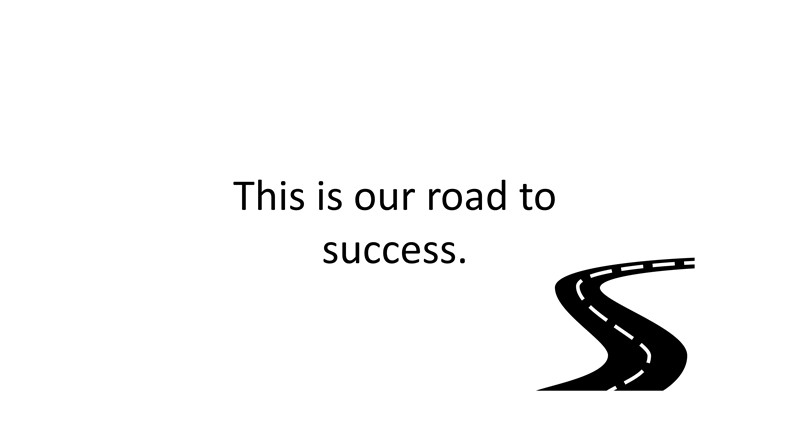You’ve likely sat through dozens of terrible presentations and resented every minute.
You know what I’m talking about: the identically themed slides, the walls of text, the monotone of the presenter’s voice, the utterly useless handouts, and the awkward silence whenever the presenter stands up and goes, “Um, thank you for your time. Are there any questions?”
You’re right to feel robbed of your time. Those boring, ineffective presentations didn’t apply the most basic principles of content marketing.
It’s time to avoid the same fate. And there’s no better way to do that than to apply the solid principles of content marketing to your presentations.
Back to Basics
Content marketing comes down to the creation and distribution of valuable, relevant, and consistent content to a clearly defined audience.
The key to understanding this definition is to… well… read the definition again.
Seriously. Content must be relevant, consistent, and valuable so that it can attract and retain a clearly defined audience.
And it’s no different in the presentation space. For a presentation to be effective, it must be relevant, consistent, valuable to a clearly defined audience.
Without those principles applied—yes, all of them, not just one or two—your audience is going to scroll through cat memes while you’re on stage rather than listen to what you have to say.
A Clearly Defined Audience
You can’t create relevance, consistency, and value if you don’t know whom you’re creating these things for.
Defining your audience is a relatively simple process; it’s all about finding the link between your main idea and the personas that make up the members of your audience.
There are several factors to consider when determining audience profiles, but here are some questions to get you started:
- What are the ages of the members of your audience?
- Where are they from?
- Where do members of your audience work?
- What are their professional roles?
- What are their goals, dreams, and ambitions?
- What are their pain points and weaknesses?
Relevance
It was Dale Carnegie who once said, “Talk to someone about themselves, and they’ll listen for hours.”
The statement holds strong merit, especially in relation to presentations. As a presenter, you have to nurture meaningful connections between your audience and your content.
Everything (and I mean everything) that you do starts with your audience.
Take the time to craft a narrative that’s relevant to your audience’s desires. And don’t stay true to your cause—stay true to your audience’s.
Consistency
Consistency is what drives content home and keeps it there.
The main thing to point out here is that you should omit everything and anything that has nothing to do with your core message. Inconsistent messages hurt your outcomes—they cause confusion, waste time, and throw your audience off.
Value
For content to be valuable, it must answer “yes” to two questions:
- Will my presentation solve a problem that my audience is facing?
- Can I ensure that value is transferred from me to my audience?
Solving the Problem
The first question is straightforward and leaves very little wiggle room: Every presentation that you give must solve a problem.
Think about it: Why would people take the time out of their busy schedules to come watch you present? What do you have to give them? Why are you the one to give it?
Presentation value is all about its usefulness, worth, and importance to the audience. The need to solve a problem applies to every presentation, in every context. Here are some examples:
- Trying to close a sale with a presentation pitch? Cool, how does your product or service solve your potential client’s problem?
- Holding a workshop for your team? Awesome, what skills does your team need to develop in order to become better at what they do?
- Reporting sales figures to the CEO? Great, what can the CEO do with that information in order to grow the company?
Value Transfer
The second question is where things get a little tricky, but it does come down to one thing: presentation delivery.
There are so many things to consider when delivering an effective presentation: tone of voice, body language, and time limits are just a few. But as a presenter, it’s imperative to look at each, build on them individually, and find ways to integrate each into a whopper of a whole experience.
We don’t have the time here to go into the details of each component of delivery. That said, there is one component that’s commonly overlooked in presentations: slides.
The Slides
Imagine going through all the trouble of crafting the perfect message and rehearsing all night and day until your delivery is perfect, but then end up with slides that look like this:
Let’s be honest: If you were sitting in a room and looking at a slide like that, would you really think it’s part of an A-grade presentation?
Why not learn how to create stellar slides? (Better yet, why not get a professional design agency to do it for you?) With a bit of practice, you can turn a snooze-fest into something a little more beautiful, like this slide I made:
And before you even say it—yes, design is a huge deal.
The world’s biggest companies know that to be the case: The Design in Tech Report 2017 reported that Facebook and Google increased their design teams 65%.
So, yes, take your slides’ designs seriously. Your audience will love you for it.
It’s All About Synergy
Phew, that was a lot to go over, but at least now you understand just how crucial content marketing principles are for presentations.
The key takeaway is that those principles work in synergy: Their value when applied together is much greater than the sum of the parts.
Apply them to your next presentation, and you’ll be thanking me.
–
This article first appeared in www.marketingprofs.com
Seeking to build and grow your brand using the force of consumer insight, strategic foresight, creative disruption and technology prowess? Talk to us at +9714 3867728 or mail: info@groupisd.com or visit www.groupisd.com






